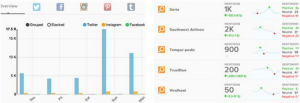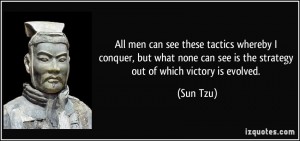Companies used to embrace the idea of showering top performers with praise and rewards as a way to boost productivity. The general thinking was that since these employees want to be here, they will work harder with less encouragement. However it can become difficult to encourage incentive goals for employees who are so aware of their above average status.
But this is not really a problem in the big picture. Top performers are your bread and butter, and they earn that status by consistently performing and reaching goals in the first place. There is quite simply too little room for improvement. Modern wisdom tells us that the most lucrative strategy with incentives is to target the “middle” performers in your organization.
Magic of the Middle
According to a Sales Executive Council (SEC) report, a five percent performance gain from your “middle” group yields 70 percent more revenue on average than it would from your top performers. Why? Apart from your top and bottom employees, the middle “average” performing employees have a dependable willingness to work combined with adequate room for improvement – magic ingredients for any incentive program.
Double that, the “middle” group are typically the largest and diverse cohort in any workforce, and focusing too much on high performers can engender resentment and smack of elitism. Top performers tend to get recognized quite a bit; middle performers tend to have smaller accomplishments overlooked. Ergo these programs should focus on those employees with the best potential, rather than the best track record.
Get in the Game
Incentives are effective because they turn workplace goals into games, making them more fun. But when you tell a top performer he/she will get rewarded for doing what they normally do, it ceases to become a game. When you pressure a bottom performer to quickly improve to the level of their top-performing peers, it ceases to become fun. Like anything else, balance is the key. Aligning your programs to move the middle does not mean you forget the other segments of employees; it is merely the method that raises the least amount of question marks for effectiveness.
Make sure your incentive programs effectively reach, engage, and move the middle in your organization. Here are five best-practice tips to help:
- Set challenging yet achievable goals. Bonuses and cash rewards can only motivate so far, so don’t rely on them to move the big strategic metrics in your organization. As a general rule, variable pay incentives are much more effective when deployed among smaller groups and aligned toward smaller, more achievable goals. Their combined effects can give you a considerable edge toward your most challenging goals but may never satisfy them fully on their own.
- Enable employees to revel in success. The spoils of success don’t stop with the cash bonus. Just as important to your employees is the prestige and in-group infamy that goes along with winning short-term incentives (remember middle employees may not usually get these moments of pride). Giving them a leaderboard or some way to publicly acknowledge top performers is a great way to add intrinsic value to any program, and can keep them satisfied long after the extra compensation loses its luster.
- Provide transparency. Many middle employees who participate in incentive programs (frontline call center/sales positions, etc.) have little to no insight into how winning their small contest will matter to the organization as a whole. Fill in those gaps as much as you can with transparency – show them how their efforts are affecting the bottom line and keep them updated as if they were owners. The sense of ownership adds deep intrinsic value and looks very good on management to boot.
- Be objective in your assessments. It cannot be stressed enough to have a data-driven approach to incentives. Do not leave the assessment of goals up to the opinions of a manager or executive; they are likely to favor high performers. Incentives must start with measurable results in mind and their results must stand up to scrutiny when the money is being handed out, or it will only sow resentment for the winners. It is always a huge motivational boost to show your teams due diligence and a level playing field during incentives and contests.
- Balance other forms of recognition. With every incentive-based contest there are winners and losers, and much care must be taken in ensuring the losers don’t feel left behind, or worse, useless. This is where an existing daily recognition platform can come in handy. Balance your experience with daily recognition, extra reward opportunities, and by cultivating a supportive culture beyond the confines of your incentive programs. Encourage frontline managers to be more engaging and develop real relationships based on mutual respect. When your employees live inside a whole culture of winning, losing never seems so bad.
Have Fun
There is no doubt that cash-based incentives and bonuses are all-around enticing, but much care must be taken in making sure you are not just creating more disparity between high, middle, and low performers. By remaining objective and transparent, communicating clearly to employees, giving them a stake in the company success, and balancing incentives with supplemental recognition, you can make incentives that move the middle without leaving anyone else out of the fun.
Business & Finance Articles on Business 2 Community(61)
Report Post






